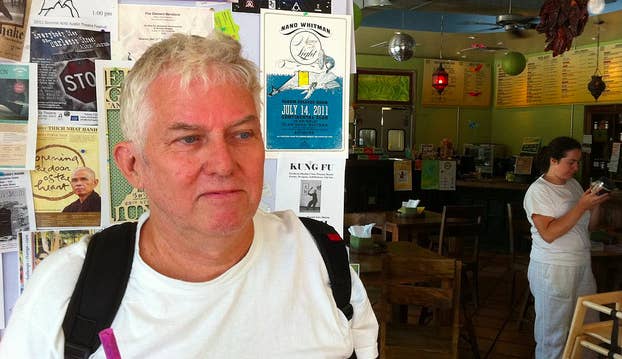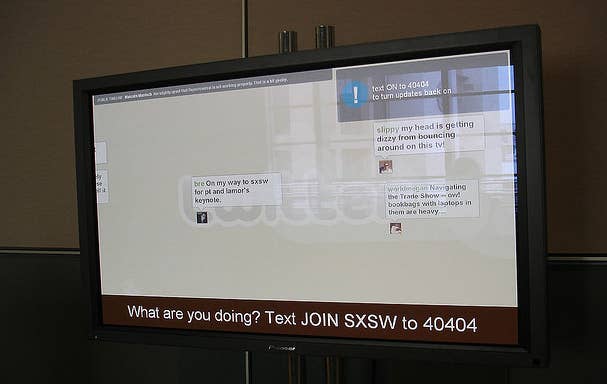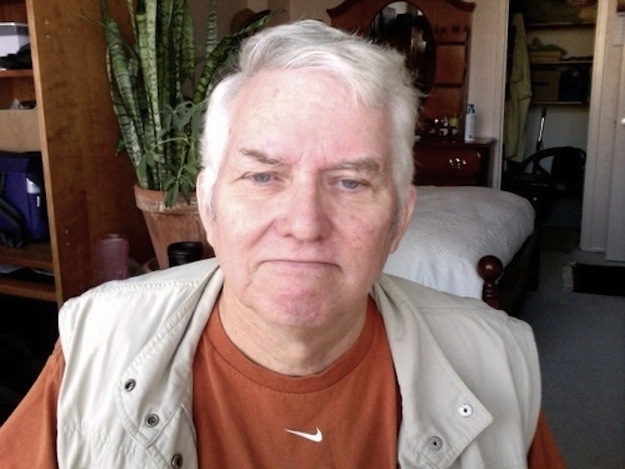
Among the dozens of articles introducing the world to a new microblogging service called Twitter, Slate's, published in April 2007, was one of the best. "Twitter is not a mere procrastination tool," wrote Michael Agger. "It acts as a mental escape hatch." Prescient!
The piece introduced us to a man named Paul Terry Walhus, a "gray-haired Austin coffee-shop blogger," who, with "8,789 friends and 1,722 followers," was the "most popular person on the site."
By the standards of 2007-era Twitter — the site was founded today in 2006 — Walhus was a celebrity. Writing later in The New York Times, Jason Pontin described the "gray-haired blogger" (again) as "one of the best-loved twitterers." He was, in effect, Twitter's first celebrity – the @justinbieber of 2007.
Walhus still tweets from the same handle, @springnet, and in largely the same style: short, functional posts, many intended to network with others or update you on what he's doing. He's got almost 10 times as many followers as he did in 2007, with over 13,000 to date. By 2013 Twitter standards, however, this makes him a power user, not a celebrity.
"I got started at South by Southwest," Walhus told BuzzFeed. "A lot of my friends who went there from Austin discovered Twitter. We all got on and started using it to communicate mostly about what was going on at SouthBy."
SXSW 2007 is often pinpointed as the moment Twitter first caught on — the "Twitter Board," a TV that displayed tweets from around Austin, is what most attendees remember. Walhus, an Austinite with a preexisting web presence as a blogger, simply rode Twitter's first big wave. "I tweeted a lot during SouthBy," he says.

Reports that he was the most "popular" user on Twitter are questionable, he says — the site that the Times and Slate used for reference combined "friends" (effectively "people you follow") with "followers" in a way that has fallen out of favor. He doesn't remember climbing past the second-place spot, anyway. "There may have been one person ahead of me," he says. Nonetheless, to be on Twitter in early 2007 was to know his handle. "I had more friends than Jon Edwards," says Walhus. "I probably still do," he jokes.
Back then, Walhus, in addition to blogging, worked in IT for the trendy San Jose Hotel, just south of downtown Austin. He also worked as a web developer and Unix administrator. Many of his early tweets, he says, were sent from the Unix command line. "It kind of lent itself to typing on the command line," he says. It reminded him a bit of Unix messaging services.
Today, like many Twitter users, Walhus tweets from his phone — either his Android handset or his iPhone — or through the site's web interface. He still blogs and works in web development, but he does some social media consulting on the side. Twitter, he says, has changed. "It's become more one social network niche out of many — you've got all the others now," he says. Though he still gets a lot of use out of it: "It's become the place where you can very quickly find and have a dialogue with someone. It's very instantaneous."

He recalls meeting Robert Scoble, a kindred spirit, at SXSW 2007. But while Scoble has tirelessly campaigned to build his social media presence over the years, Walhus has taken a more conservative approach. "Now I'm looking for quality over quantity," he says. "It's still really useful in that way, where real-world interaction can lead you to Twitter, where you can find [peoples'] websites and find out more about what they're doing."
"It's great but in a qualitative way more than in a quantitative way. I'm not trying to get massive numbers of people," he says. "I stopped doing that a long time ago."
Walhus' allegiance has shifted over the past six years — chiefly in the last two. Like Scoble, he's now more active on Google+ than he is on Twitter. "I have [moved on to G+], because of the depth of the interaction, and the ability to meet people and hang out, and run a workgroup." He loves Hangouts, and wishes Twitter would add more video and audio integration.
I asked him if, as the first (though quickly deposed) king of Twitter, he had any advice for the company. "They're going the right direction," he says. "I'd like to see more integration between social networks — with Facebook and Google+. They each have their niche and their advantage, but I'd like to see more integration."
As for the heir to his throne, Justin Bieber, who has over 30 million followers? "I would just say, great going."
"I'm surprised it's not Justin Timberlake," he says. "He's the hottest thing going on these days. My advice to Bieber would be to watch out for Justin Timberlake."
